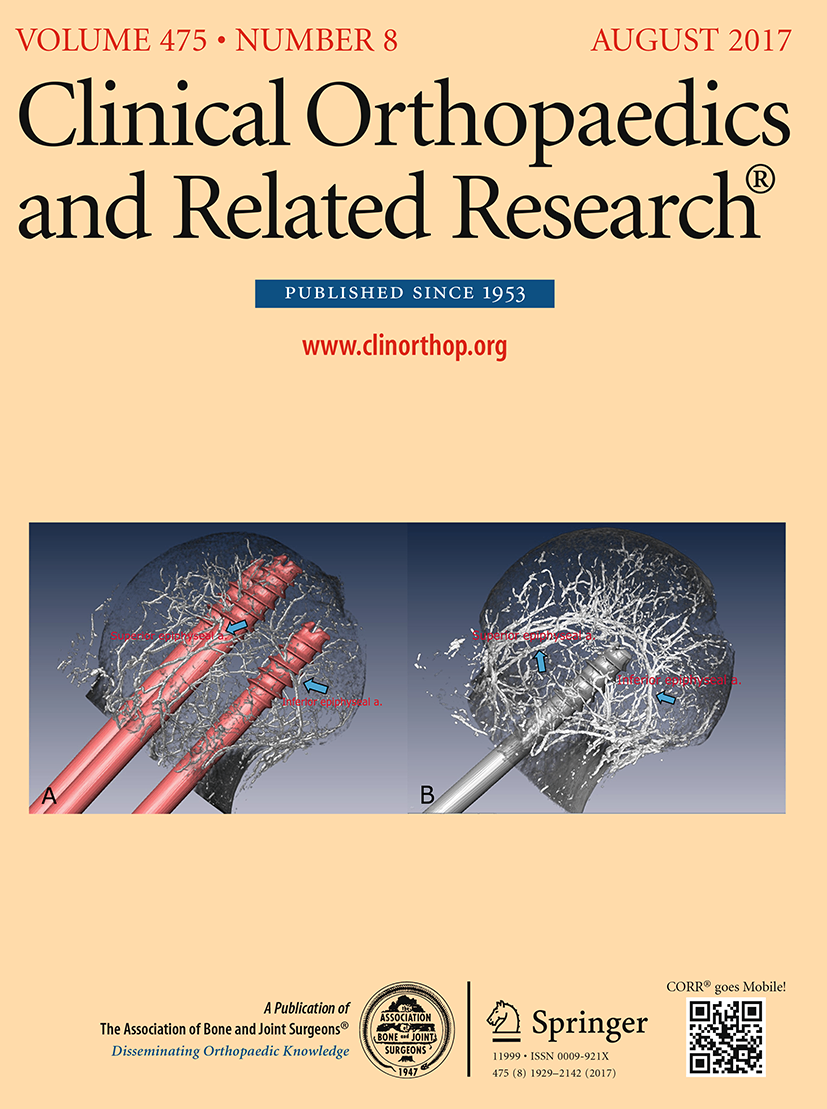
Rotating-platform TKA comparable to fixed-bearing TKA

Rotating-platform TKA comparable to fixed-bearing TKA
Rotating-platform TKA no different from fixed-bearing TKA regarding survivorship or performance: a meta-analysis
Clin Orthop Relat Res. 2014 Jul;472(7):2185-93. doi: 10.1007/s11999-014-3539-4. Epub 2014 Mar 4.Synopsis
17 studies were included in this meta-analysis (15 randomized controlled trials without blinding or prospective comparative studies and 2 retrospective comparative studies) comparing the outcomes of rotating-platform mobile-bearing prostheses to fixed bearing prostheses for total knee arthroplasty. Results from the meta-analyses of clinical scores, range of motion, radiographic outcome, rates of osteolysis, loosening, and progressive radiolucent lines, component alignment, adverse events, and revisions indicated no significant differences between rotating-platform and fixed-bearing designs, with the exception of tibial component alignment in the AP plane in favour of fixed-bearing design. However, this effect was small and clinically insignificant.
Were the search methods used to find evidence (original research) on the primary question or questions stated?
Was the search for evidence reasonably comprehensive?
Were the criteria used for deciding which studies to include in the overview reported?
Was the bias in the selection of studies avoided?
Were the criteria used for assessing the validity of the included studies reported?
Was the validity of all of the studies referred to in the text assessed with use of appropriate criteria (either in selecting the studies for inclusion or in analyzing the studies that were cited)?
Were the methods used to combine the findings of the relevant studies (to reach a conclusion) reported?
Were the findings of the relevant studies combined appropriately relative to the primary question that the overview addresses?
Were the conclusions made by the author or authors supported by the data and or analysis reported in the overview?
How would you rate the scientific quality of this evidence?
Yes = 1
Uncertain = 0.5
Not Relevant = 0
No = 0
The Reporting Criteria Assessment evaluates the transparency with which authors report the methodological and trial characteristics of the trial within the publication. The assessment is divided into five categories which are presented below.
4/4
Introduction
4/4
Accessing Data
3/4
Analysing Data
3/4
Results
3/4
Discussion
Detsky AS, Naylor CD, O'Rourke K, McGeer AJ, L'Abbé KA. J Clin Epidemiol. 1992;45:255-65
The Fragility Index is a tool that aids in the interpretation of significant findings, providing a measure of strength for a result. The Fragility Index represents the number of consecutive events that need to be added to a dichotomous outcome to make the finding no longer significant. A small number represents a weaker finding and a large number represents a stronger finding.
Why was this study needed now?
Mobile-bearing prostheses in total knee arthroplasty (TKA) are cited to improve the biomechanics of the knee and emulate its natural kinematics, thereby reducing polyethylene wear when compared to fixed bearings. Previous meta-analyses comparing mobile- to fixed-bearing TKAs often failed to distinguish between the several mobile-bearing subgroups. Several mobile-bearing designs exist, including rotating-platform, meniscal-bearing, and AP glide-and-rotation designs. As such, this meta-analysis was performed to specifically compare mobile-bearings of the rotating-platform design to fixed-bearings designs following TKA.
What was the principal research question?
How do rotating-platform mobile-bearings compare to fixed-bearings with respect to clinical performance, component alignment, incidence of adverse events, and revision rates following total knee arthroplasty?
What were the important findings?
- No significant differences were observed between groups when a meta-analysis was performed for Knee Society Function scores in 8 studies (p=0.465), Knee Society Knee scores in 10 studies (p=0.429), Hospital for Special Surgery scores in 3 studies (p=0.510), SF-12 Physical scores in 3 studies (p=0.501), and SF-12 Mental scores in 3 studies (p=0.209).
- Range of motion for flexion contracture (4 studies), extension (3 studies), flexion (9 studies), and total range of motion (8 studies) were comparable between groups (p=0884; p=0.499; p=0.058; p=0.685; respectively).
- No between group differences were observed for radiographic evaluations for palmar tilt (3 studies; p=0.670), radiolucent lines (6 studies; p=0.348), nonprogressive radiolucent lines (3 studies; p=0.903), and tibial radiolucent lines (3 studies; p=0.538).
- Rates of radiographic osteolysis (3 cases total; rotation-platform group), radiographic loosening 2 cases total; rotation-platform group), and progressive radiolucent lines (1 case in total; fixed bearing group) were not statistically different between groups.
- Tibial component alignment in the AP plane (3 studies) favoured the fixed-bearing group (standardized mean difference, 0.229; 95% CI 0.035–0.422; p=0.020), although effect size was small and not clinically important. Femoral component alignment in the AP plane and tibial component alignment in the sagittal plane were similar between groups (3 studies each; p=0.894 and p=0.379, respectively).
- Incidence of anterior knee pain (3 studies), and stiffness requiring manipulation (4 studies) were comparable between groups (p=0.821 and p=0.326 respectively).
- Number of patients requiring revision for deep infection (3 studies; 2 revisions in fixed bearing group), loosening (3 studies; 3 cases in rotating-platform group), or for any reason (9 studies; 4 revision in each group) were not significantly difference between groups.
What should I remember most?
Results from the meta-analyses of clinical scores, range of motion, radiographic outcome, rates of osteolysis, loosening (progressive radiolucent lines), component alignment, adverse events, and revisions indicated no significant differences between rotating-platform and fixed-bearing designs, with the exception of tibial component alignment in the AP plane in favour of fixed-bearing design. However, this effect was small and clinically insignificant.
How will this affect the care of my patients?
The findings of this study demonstrated no clinically important differences between total knee arthroplasty performed using rotating-platform mobile-bearing prostheses versus fixed-bearing prostheses. The authors recommended that future research focus on other factors that may influence outcome.
Learn about our AI Driven
High Impact Search Feature
Our AI driven High Impact metric calculates the impact an article will have by considering both the publishing journal and the content of the article itself. Built using the latest advances in natural language processing, OE High Impact predicts an article’s future number of citations better than impact factor alone.
Continue



 LOGIN
LOGIN

Join the Conversation
Please Login or Join to leave comments.